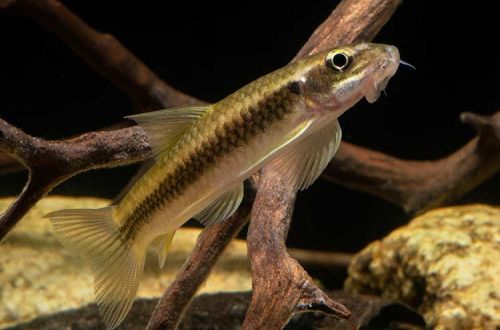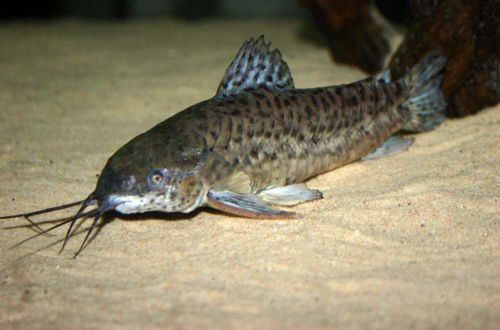
Loricaria golden
Loricaria golden or six-banded Loricaria, scientific name Rineloricaria microlepidogaster, belongs to the family Loricariidae (Mail catfish). The catfish is native to South America. In nature, it inhabits the basins of the Parana and Uruguay rivers in the northern regions of Argentina and the southern states of Brazil.

Description
The maximum recorded size of adults reached 19 cm. The fish has an elongated, somewhat flattened body with a very narrow caudal peduncle, which is crowned by a pointed (in its upper part) tail. The head is pointed wedge-shaped. The mouth is located on the underside and its structure is adapted for eating algae deposits from the surface of stones and snags.
The body pattern helps to camouflage on the rocky river bottom. The color is gray-yellow with dark specks of irregular shape. Some of the specks merge into lines that ring the body.
Behavior and Compatibility
A peaceful, non-aggressive fish, it gets along well with other calm, non-territorial species that live in the water column or near the surface.
Brief information:
- The volume of the aquarium – from 150 liters.
- Temperature – 22-26°C
- Value pH — 5.8–7.8
- Water hardness – up to 20 dGH
- Substrate type — stony
- Lighting – subdued
- Brackish water – no
- Water movement – moderate / strong
- The size of the fish is up to 19 cm.
- Nutrition – plant-based food
- Temperament – peaceful
- Keeping alone or in a group in large aquariums
Maintenance and care, arrangement of the aquarium
It is considered an unpretentious species. In nature, it is found both in calm rivers with muddy waters, and in fast streams with a rapid current, as well as in polluted reservoirs. In the design of a home aquarium, it is recommended to use a rocky substrate, natural driftwood of various sizes, and areas with aquatic vegetation. The lighting is as dim as possible.
Loricaria six-banded is adapted to life in a wide range of hydrochemical parameters, which simplifies the process of water treatment during regular maintenance of the aquarium. It is enough to use settled clean water and prevent the accumulation of organic waste. The latter is achieved by weekly cleaning of the substrate and the smooth operation of the filtration system.
Food
Plant-based foods such as algae pellets, tablets and briquettes should be the mainstay of the diet, as well as conventional sinking foods as a source of protein supplements.





